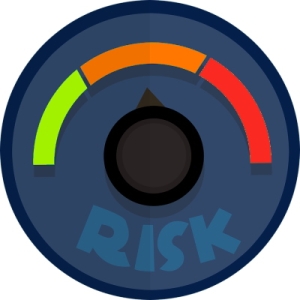5 Skin Cancer Risk Factors
 Worrying moles
Worrying moles
Normal moles are common and harmless, but nowadays we all understand a lot more about how certain moles could actually be skin cancer, which requires urgent expert treatment.
There are certain known risk factors that make you more likely to be affected by skin cancer and it can be helpful to be aware whether you are at higher risk. However, there’s never any room for complacency and even those at ‘low risk’ should be alert for suspicious skin blemishes and regularly checking themselves for anything odd.
5 skin cancer risk factors
- UV exposure
Without a doubt, exposure to UV rays from the sun and/or sunbeds is the biggest known risk factor in skin cancer, both for melanoma and non-melanoma. People who work outdoors, holiday frequently, live at high altitudes or in areas with bright sunlight year-round have a higher risk of developing skin cancer. Any history of sunburn is also a risk factor. - Age over 50 years old
Skin cancer can appear years and decades after a sunburn. Many people suffering from skin cancer now have been careful for years, but may have had sunburn as a child. Attitudes to sun protection were a lot more relaxed in the 60s-70s and even in the 80s the trend for tanning saw people using sun oils as low as factor 2 which gave insufficient protection.
Nowadays, 50SPF is a common choice and anything below 30SPF is considered to be lower protection. Unfortunately we can’t undo historical damage, so the best advice is to be alert for any worrying signs. - Family history of skin cancer
If members of your family have had skin cancer then you are at higher risk. That may be partly due to genetic predisposition e.g. colouring and may also have something to do with the way you holidayed in the past. Either way, if someone close to you has had a diagnosis of melanoma or non-melanoma then that’s a sign that you should be checking your moles diligently as you are at a higher risk of developing the disease yourself. - People with more than 50 moles
Having an elevated amount of moles on your skin is an indicator that puts you at higher risk. All your current moles may look normal and healthy, but it’s vital to be vigilant for any new or changing moles. If anything looks ‘different’ then that’s a sign to get it checked out. - Light skin or light eyes
If you have lighter skin tones or blue/grey eyes, then you are more like to burn sooner when exposed to the sun. This means that you could go red sooner than others, for example, just from popping out for a short walk without sun protection.
What to do if you’re at higher risk of skin cancer
If any of the above apply to you, then you’re probably wondering what you can do about it. There’s no need to panic, but there are two important measures that you should take:
- Skin protection
Get into the habit of using high protection sunscreen every day. Not just in summer or for holidays, you can apply sunscreen all year round to the exposed areas such as face, neck, ears, scalp and hands. If you’re spending time outdoors such as on holiday or for sports, then make extra sure to use SPF50+ sunscreen and reapply it frequently. Choose a wide brimmed hat, long sleeves and long trousers to cover with clothing as well - Skin checking
Get into the habit of checking your skin regularly. Look for new moles or moles that look odd in someway e.g. misshapen, jagged or a weird colour. Dr Ross Perry always advises patients to be alert to the the ‘ugly duckling’ sign – the ‘odd one out’ that makes a mole different to the others.
In case of concern, the first step is to visit the GP to assess the mole and either rule out skin cancer or arrange a referral as appropriate.
 Dr Ross Perry
Dr Ross Perry
Dr Perry is renowned as an expert in removal of skin lesions. He has removed thousands of moles in his role as Medical Director and founder of Cosmedics Skin Clinics including the London mole Removal Centre.
His career includes working in the NHS both in skin cancer reconstruction and as a GP, so he is experienced and expert in diagnosing skin lesions and providing the best possible advice/treatment.
Can I get rid of unwanted moles?
Any mole deemed risky is normally removed very quickly on the NHS and will then be tested to understand whether it was cancerous so that the need for further treatment may be assessed.
However, many moles are deemed to be ‘cosmetic’ in nature and when this is the case, free NHS treatment is now severely reduced.
Clients can choose to have moles removed privately at clinics such as the London Mole Removal centre, who specialise in mole removal and also arrange full histology (testing) as a precautionary measure.
Private Mole Checks & Removal
The London Mole Removal Centre is a private company, offering diagnosis and treatment for skin lesions including moles, cysts, skin tags, warts, verruca, lipoma, xanthelasma, milia. All consultations and treatments are carried out in person by doctors who are specially trained in the latest laser and skin surgery techniques and are highly experienced in the field. Patients benefit from:
- No waiting lists
- Fully trained doctors, registered with GMC
- Blemishes can usually be removed in the same appointment as the consultation, saving the need for a repeat visit and allowing patients to get very quick treatment
- Choice of 4 clinics in London plus one in Bristol
- Testing with report provided where necessary
For more information or to book a consultation, please complete the form on this web page or call 020 7731 3791.


